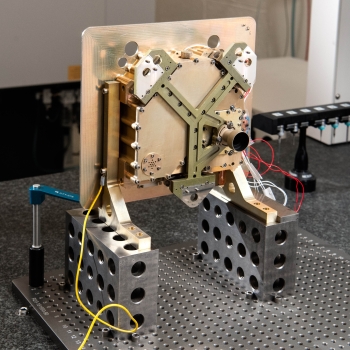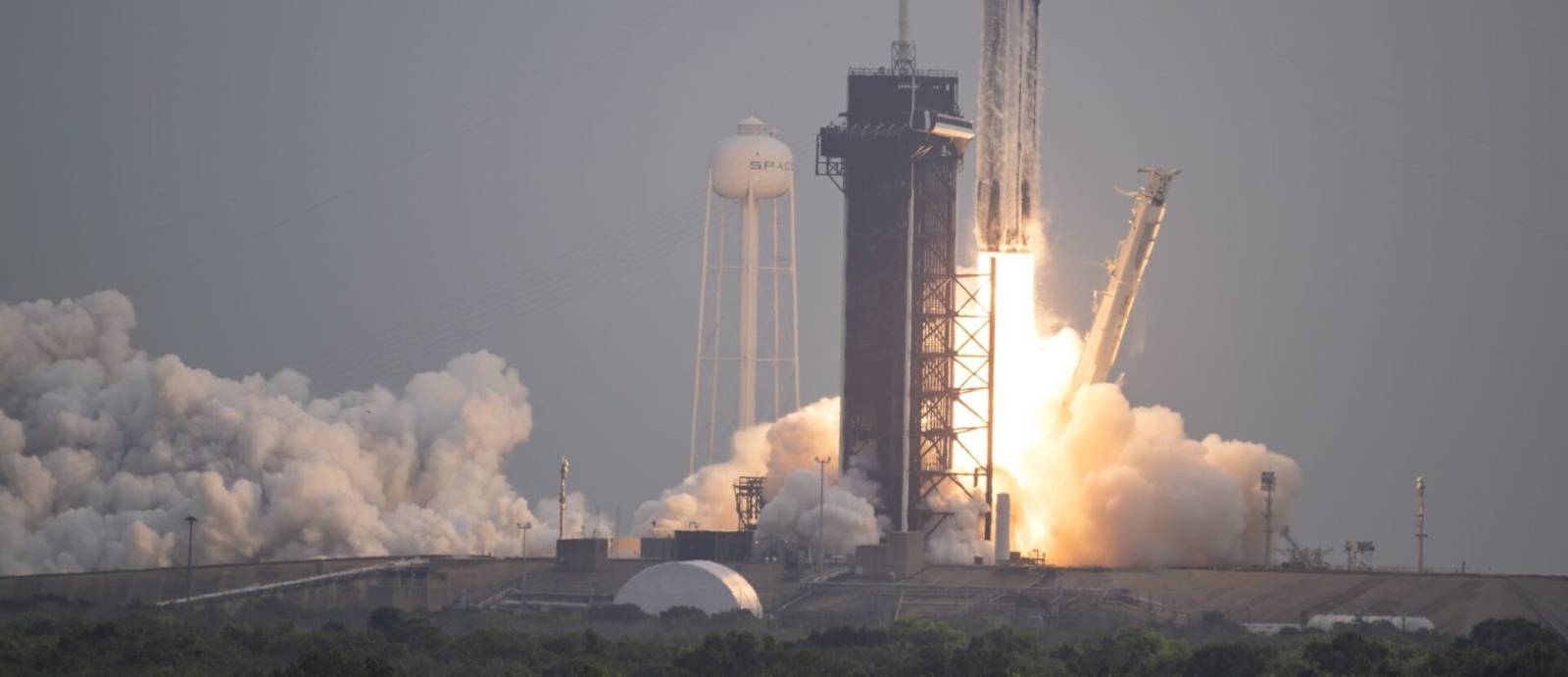
Deep-space camera sends farthest optical communications link yet
In December 2023, the Hale Telescope at Caltech's Palomar Observatory in San Diego County, California, received a video transmission of a cat named Taters chasing a laser pointer. The video had traveled 19 million miles from the Deep Space Optical Communication (DSOC) system, an instrument aboard NASA's Psyche spacecraft that is managed by the Jet Propulsion Laboratory (JPL). The data rate, at 267 megabits per second (Mbps), was faster than the terrestrial broadband connection between the ground station and mission control at JPL.
A key piece of the DSOC is its Photon-Counting Camera (PCC), built by Lincoln Laboratory. The successful transmission represented the furthest optical communications link ever recorded, breaking the 2013 record of 239 thousand miles aboard the Lunar Laser Communication Demonstration. Four months later, the DSOC system closed another link at 25 Mbps from ten times further at 140 million miles.
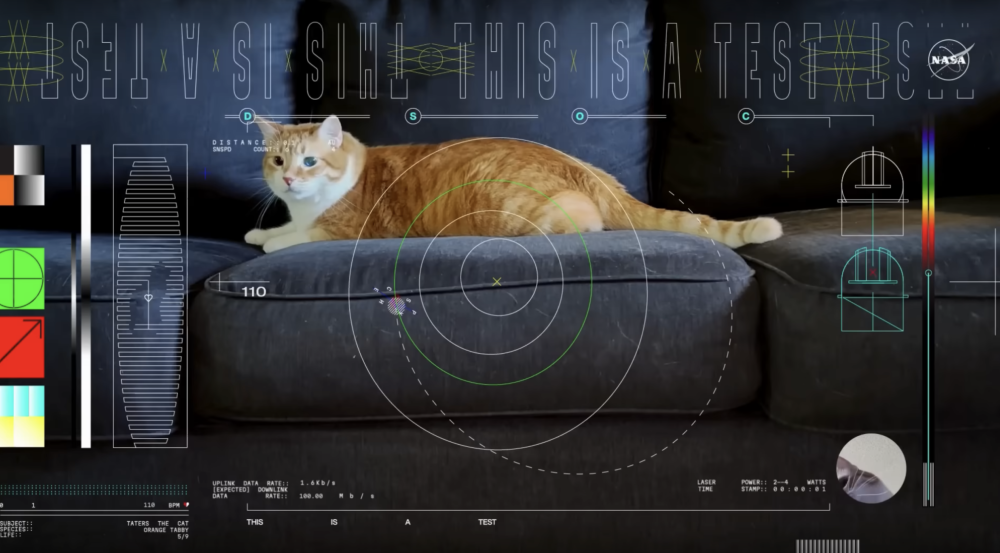
The Psyche spacecraft is en route to an asteroid located between Mars and Jupiter to study its metal-rich composition. The DSOC is an optical technology demonstration mission meant to serve as a pathfinder for future high-speed communications between Earth and Mars. The first opportunity to test the link at its maximum distance (2.6 astronomical units, or 242 million miles) will occur in the summer of 2024.
"Not only are high-speed communications essential for future crewed missions to Mars, the science yield of robotic missions can also be increased by more than a factor of ten," says Erik Duerr, who is the principal investigator for the PCC and leader of the Laboratory's Advanced Imager Group. "Planetary mission planners currently design instruments and data collection for relatively low-rate radio frequency (RF) communications systems. These missions are planned for a decade or more and then require that long again to carry out, making each opportunity rare and costly. Optical communications from deep space can increase the amount we learn from each of these precious opportunities by tenfold or more."
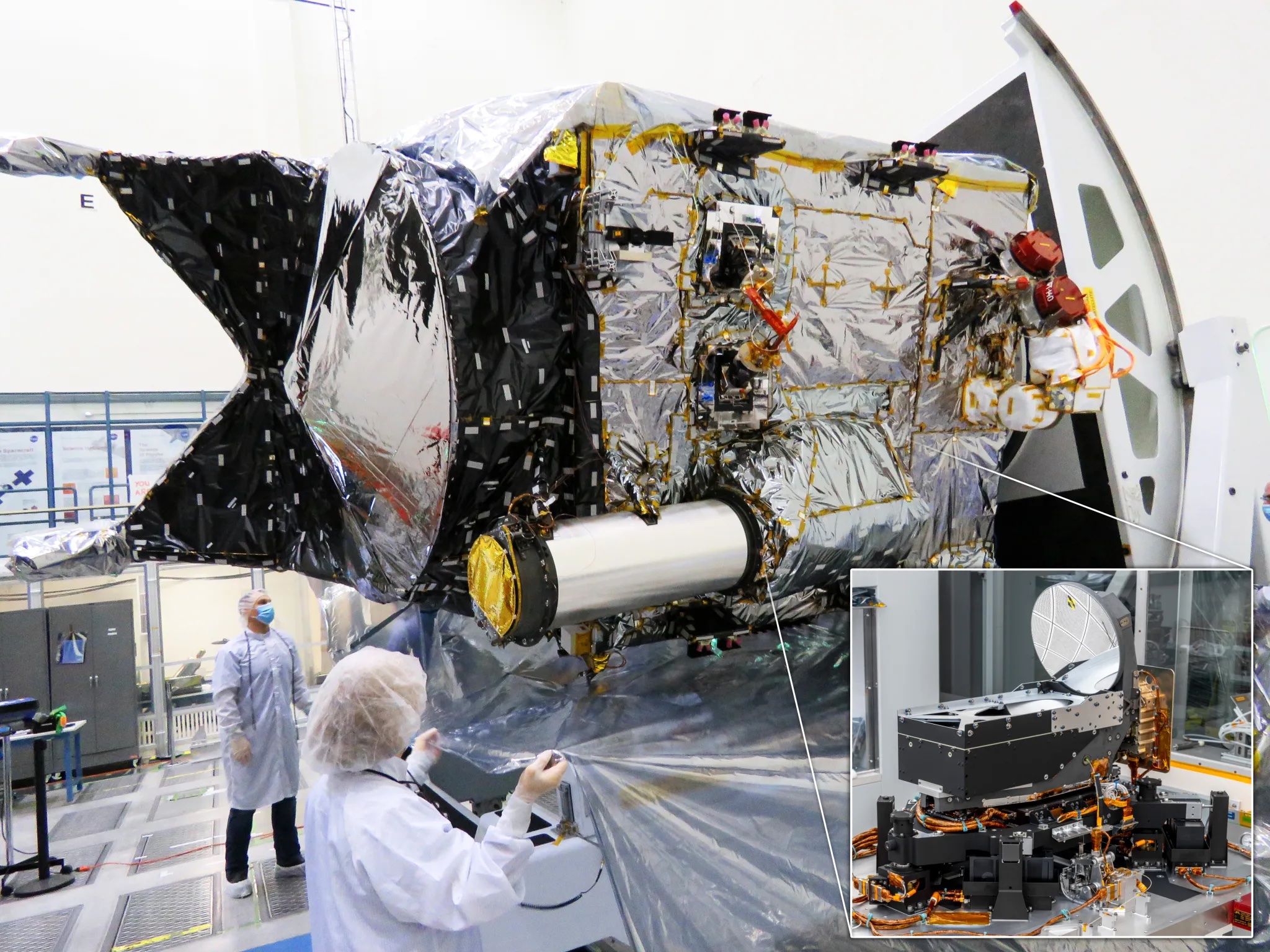
Within the DSOC system, the Laboratory's PCC serves a number of functions. One is to facilitate the system's pointing, acquisition, and tracking capabilities. Optical communications can achieve higher data rates than RF systems because they transmit data in a narrower beam. A narrower beam means more power (and therefore data) can hit the receiver, but it also means that the beam must be aimed precisely or risk missing the receiver entirely.
"The ground portion of the DSOC system includes a powerful laser that acts as a beacon to the Psyche spacecraft," says Duerr. "But even though that beacon is thousands of watts, Psyche is so far away that much less than a trillionth of its light makes it to the spacecraft. The DSOC system has to see this dim light and also distinguish it from all of the stars."
To carry out this task, the PCC has at its heart a technology developed by MIT Lincoln Laboratory for more than two decades, called Geiger-mode avalanche photodiodes (GmAPDs). The GmAPDs allow the camera's pixels to see individual photons and time their arrival to that pixel up to a billionth of a second. The timing is important because the ground beacon blinks on and off in a pre-arranged pattern. By measuring the beacon blink pattern, the PCC can distinguish it from other sources of light. The PCC is also responsible for receiving information from that beacon, which is facilitated by the GmAPD photon-counting ability.
The PCC's final function is to measure the pointing of the downlink (the light that sends information from the spacecraft back to Earth) to the ground terminal. Aiming the downlink back to Earth is no easy task as the spacecraft is not only millions of miles away from the Earth but also moving very fast.
"This combination of speed and distance means that the beacon is not where the Earth is but where it was 20 minutes ago," says Duerr. Therefore, the DSOC must determine where the Earth will be by the time the downlink reaches the terminal and point to that location. "The PCC measures this point-ahead angle of the downlink relative to the beacon to make sure it's what DSOC intends."
The DSOC is part of a growing number of Laboratory technologies deployed for civil space missions that benefit the nation beyond national security.
"It's very exciting to see the DSOC demonstration working as intended on-orbit. It took a skilled and dedicated team across multiple organizations to show that this could be accomplished," says Laura Kennedy, who is a leader in the Laboratory's newly established Civil Space Systems and Technology Office. "This is one of several recent successful laser communications demonstrations that the Laboratory has been a key part of — together they provide a broad set of options for future space missions."
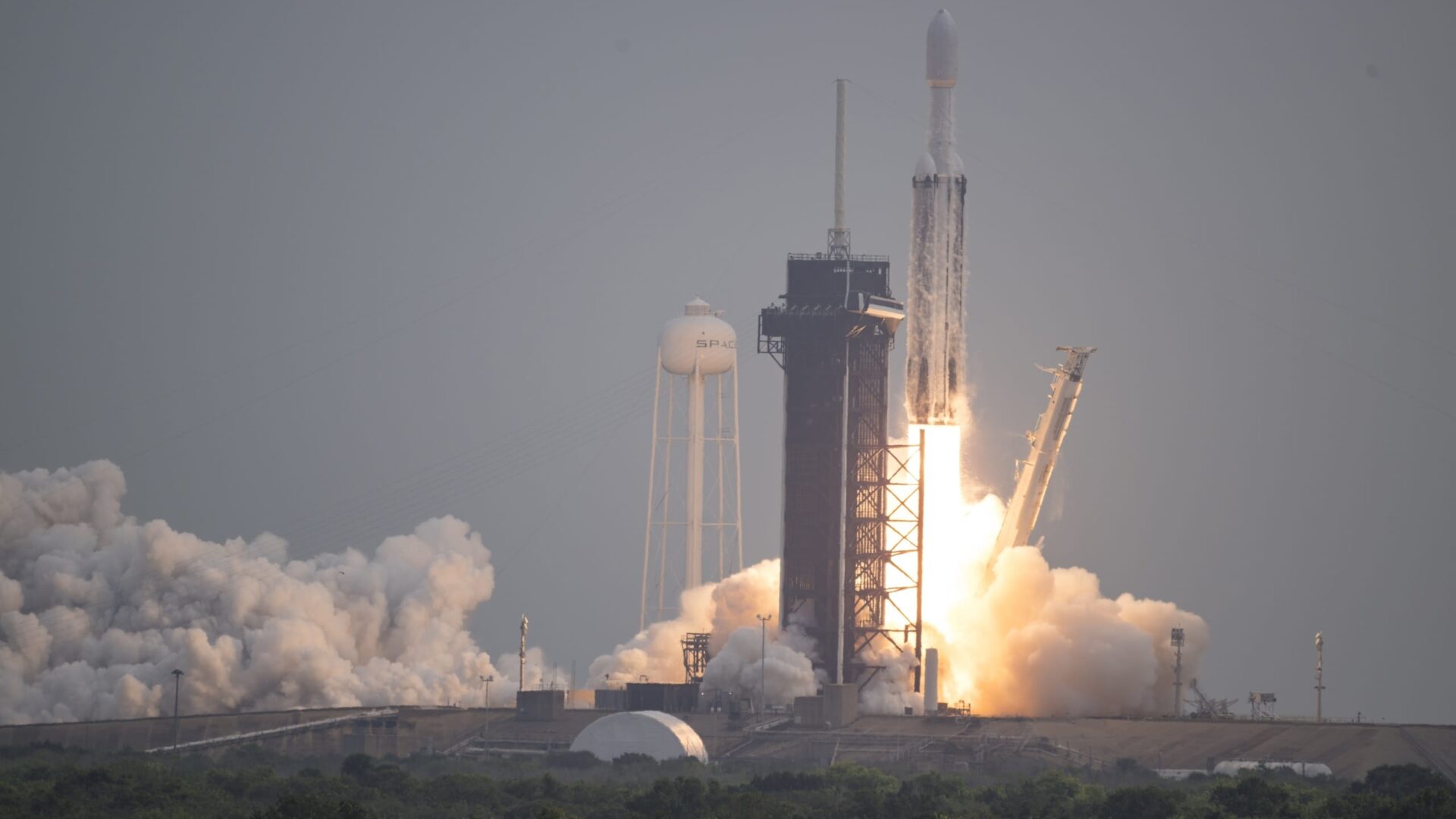
Visit NASA's Psyche mission page for up-to-date information on status and accomplishments. For inquiries, contact Anne McGovern.
